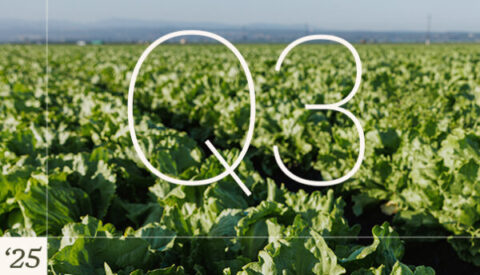Milk production closed the first half of 2025 in growth mode. As of June, milk production was 3.3% higher than the previous year. May production was up 2.3%. Both growth rates are faster than the long-term trend of about 1.5% and a leap above anything seen in recent years, during which components climbed but milk volume stalled. Most of this growth was a function of more cows in the herd. In June there were 9.47 million milk cows in the U.S., 146,000 more than a year earlier. Most of the higher cow numbers came from holding on to existing cows longer rather than more aggressive breeding of replacements. Breeding for the milking herd will struggle to gain traction compared with the favorable alternative of breeding to beef. The impressive year-over-year (YOY) gains in milk production need to be tempered somewhat by the fact that the prior-year levels were heavily curtailed by highly pathogenic avian influenza. Still, dairy markets for the remainder of the year will be defined by how well demand can work through the increasing levels of supply. Ultimately, the additional milk will be processed into dairy products like cheese and butter and their byproducts whey and nonfat dry milk. After a few years of major investments, an abundance of processing capacity is ready to take the milk. Indeed, the pattern of states where cow numbers have increased the most follows where those investments have been made. This includes the cheese-focused states of South Dakota, Kansas and Texas as well as Idaho, which is seeing expansions in yogurt and ice cream, and a major butter and powder investment in nearby Pasco, Washington. Can Demand Keep Up? The question shaping markets for the rest of the year will be whether demand can keep up. Domestic demand in the first half of 2025 has been healthy. Combining all products on a total milk solids basis, domestic demand was up 3% YOY through May. Butter demand grew by 4.6% and American-style cheese increased 1.1% while other cheese styles fell by less than half a percent. With more cheese comes more whey, and demand for high-protein whey products has been surging. But sweet dry whey, the commodity referenced in milk pricing formulas, has been a different story, with demand falling 18%. Whey has struggled beyond our shores as well. In 2024, 37% of U.S. whey exports went to China, the largest global importer of whey. However, China has dramatically scaled back purchases from the U.S. in recent months. Chinese import data suggest that in June, China’s total whey imports declined 24% YOY, but its imports of U.S. whey fell disproportionately by 61%. Most ongoing trade negotiations have, to this point, avoided major tit-for-tat escalation. China, however, has been more aggressive, to the detriment of whey. If that turns out to be the beginning of an ongoing challenge into the later part of the year, it could put downward pressure on Class III prices. On a brighter note, exports of butter have been phenomenal, and those of cheese have been record-setting. Butter has benefited from an ongoing discount to world prices that has opened the door to a 150% increase in export sales volume through June versus the same period last year. Cheese exports continued along a steadier growth trajectory to hit a new record high in June of 115 million pounds. Supply constraints have been an ongoing theme in dairy markets over the past couple of years. Those constraints aren’t completely gone, but milk supply growth has returned. The demand side of the equation is showing that it has what it takes to keep up for now. However, with lingering uncertainty around trade and the health of the U.S. economy, any signs of weakness from either the domestic or export markets could put downward pressure on prices. Luckily, feed prices appear poised to remain favorable, providing some breathing room for margins, and beef sales will continue to be a boon to revenues. If the milk market does find itself oversupplied, much of the herd growth has been from holding on to older cows, so a reasonably quick contraction could occur. But given the uncertainty, looking for opportunities to limit risk through insurance or hedging for the rest of 2025 and into the beginning of 2026 could be wise.
More Articles
See All Insights2024 is shaping up to be a remarkable year for dairy profitability. After a spiritless start, an early-spring surge in prices seemed too good to last.
Lower Sentiment, Lower Lettuce Demand In some ways 2025 has been standard in the lettuce industry. From early March, production shifted from Yuma, Imperial Valley and
By Ben Laine, Senior Dairy Analyst Dairy markets are experiencing significant changes, and some early market impacts are beginning to appear. Two additional major cheese processing



